* (Halloween countdown post #8)
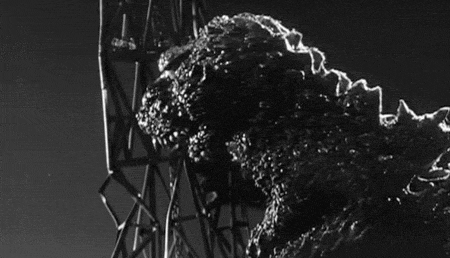
‘From an early age, Honda was fascinated by the power of cinema. The son of a Buddhist monk, Honda was born on May 7, 1911, in Asahi, a small agricultural village in Yamagata Prefecture, high in the mountains of Tohoku. But it wasn’t until his family moved to Tokyo, while Honda was still in grade school, that he experienced the fast-modernizing Japan of the Meiji era. At a school assembly, he saw his first motion picture, a silent American western (likely one of the Universal Bluebird photoplays, which were extremely popular in Japan from 1916 to 1919), and by the third and fourth grade he was frequenting cinemas to see ninja shorts starring Matsunosuke Onoe and films imported from the West. During a screening of F. W. Murnau’s classic The Last Laugh (1924), an older brother explained to young Honda that films were made by a kantoku (director) who oversaw the action. This realization proved inspiring, and later, when it was time to attend university, Honda reneged on a family commitment to enroll in dental school and instead joined Nihon University’s fledgling film program, which led to an apprenticeship at P.C.L., the studio that would eventually become Toho.
‘It was the success of his early, non-horror pictures that ultimately landed Honda the Godzilla assignment. The monster epic was indeed a major career risk for all involved; if the film had turned out poorly, and if it had flopped at the box office, then Honda, Tsuburaya, and producer Tomoyuki Tanaka, who had come up with the idea, would have answered to the studio brass that had spent a then-astronomical budget of about 275,000 U.S. dollars on the production. But Godzilla was a major domestic hit, and also the first foreign film to receive widespread distribution in the U.S., albeit in altered form, as Godzilla, King of the Monsters, with Raymond Burr cleverly spliced into the drama. Toho rushed the sequel Godzilla Raids Again (1955) into production, but due to a scheduling conflict Honda did not direct it; in fact, it would be several years before he became Japan’s most prolific director of sci-fi and monster films.
‘Honda was increasingly called upon to direct Toho’s popular genre pictures. Among these are Rodan, wherein the director instills the story of a prehistoric flying monster terrorizing Japan with tragedy and a sense of awe; The Mysterians (1957), Honda and Tsuburaya’s alien-invasion salute to the 1953 War of the Worlds; and The H-Man (1958), in which fishermen exposed to an H-bomb test (a nod to the fate that in 1954 befell the crew of the Japanese tuna trawler the Lucky Dragon No. 5, a tragedy that had also served as a key inspiration for Godzilla) turn into nuclear goblins that terrorize Tokyo. Through it all, Honda became known as a director with a subtle way of coaxing performances from actors, and one who never raised his voice on set. He rarely coached performers or gave specific direction, but he could be demonstrative when necessary: during the filming of Godzilla, while shooting the famous scene where the monster appears over a mountain, Honda became impatient with newcomer Akira Takarada’s half-hearted effort to rescue the ingenue (Momoko Kochi) from danger. Honda picked up the actress in his arms and ran down the hill, saying, “This is how you save someone!” He was not a visual stylist, leaning on his art directors and directors of photography (particularly Hajime Koizumi, who shot most of Honda’s sci-fi and other films from the late fifties to the late sixties) to help define the look of his films; instead, Honda concentrated on finding the most effective dramatic means of expressing the movies’ often socially conscious themes. As Japan joined the United Nations and established itself as a peaceful, economically resurgent country, Honda’s genre films became more optimistic. In Battle in Outer Space (1959), Gorath (1962) and Mothra vs. Godzilla (1964, among the best Godzilla sequels), Honda highlighted the need for cooperation among nations to solve challenges facing the planet.
‘After the enormous box-office success of Mothra (1961), Honda would work almost exclusively on kaiju pictures for the remainder of his career; though he would harbor disappointment and resentment at being so pigeonholed, he remained loyal to Toho and would not protest. Some of Honda and Tsuburaya’s most entertaining films came in the decade following Mothra. King Kong vs. Godzilla (1962), which cleverly spoofed Japanese television programming, was a major sensation and remains the best-attended Toho Godzilla film in Japan. Atragon (1963) melded the mystery of a lost continent with an antiwar theme, expressing misgivings over imperial Japan’s legacy. And Ghidorah, the Three-Headed Monster (1964) saw Godzilla convert from villain to hero when confronted with its ultimate nemesis, the flying, lightning-spitting space dragon of the title.
‘Honda’s value to Toho lay not only in the domestic box-office returns but also the money his films netted in foreign sales to the U.S., Europe, and other territories. Beginning in the midsixties, Toho began partnering with American producers to help cover production costs, casting fading or second-tier American stars in leading roles, giving Honda’s productions increased international potential. Honda had a good rapport with Nick Adams, who starred in Invasion of Astro-Monster (1965), in which Godzilla and Rodan fend off alien invaders and their monster minion, King Ghidorah; and Frankenstein Conquers the World (also 1965), wherein the Hiroshima bomb gives rise to a giant, mutant Frankenstein monster that battles a giant reptile in the Japanese mountains. But some of Honda’s international coproductions were fraught with tensions. Honda reportedly had trouble reining in a rebellious Russ Tamblyn on the set of the wild-and-woolly Frankenstein sequel The War of the Gargantuas (1966); Rhodes Reason, Honda’s leading man in King Kong Escapes (1967), would later dismiss the director as a “hack”; and Latitude Zero (1969), an undersea sci-fi adventure incorporating Honda’s pro-science, pro-peace ideals, saw him directing Joseph Cotten, Cesar Romero, Richard Jaeckel, and others from an English-language script, but the production nearly collapsed when the American producers defaulted on their half of the costs.
‘By the end of the sixties, the Japanese movie industry was contracting, largely on account of the dominant popularity of television programming. Film budgets shrank; permanent contracts with actors, directors, and crew members were ended; and the Godzilla series was eventually relegated to kiddie matinee releases. By the time Honda made All Monsters Attack (1969), just a year after delivering the spectacular fan favorite Destroy All Monsters, budgetary limitations meant he was forced to utilize large amounts of monster footage recycled from previous films (nevertheless, All Monsters Attack is a mini-masterpiece of children’s entertainment). After the death of Eiji Tsuburaya in 1970, Toho restructured its special-effects staff, and the quality of their work would noticeably decline. No longer able to make films with the same production values as before, Honda notified Toho of his retirement. He dabbled in occasional television directing on Tsuburaya Productions’ The Return of Ultraman (1971–72) and other effects-laden shows, before returning to direct his final feature, Terror of Mechagodzilla (1975), one of the stronger Godzilla films of that decade. And that might have been it for Honda if not for a chance meeting on the golf course with his old friend Akira Kurosawa in the late seventies. Kurosawa would pull Honda out of retirement to become his right-hand man, acting as a second-unit director as well as a confidant, fixer, and occasional substitute director. Together they worked on Kurosawa’s last five features: Kagemusha (1980), Ran (1985), Dreams (1990), Rhapsody in August (1991), and Madadayo (1993). Honda died in 1993 of lung cancer, and Kurosawa, deeply saddened by the loss, would read the eulogy at his funeral.
‘Honda’s films were distributed around the world more widely than those of any other Japanese filmmaker prior to Hayao Miyazaki. In addition to having been embedded in popular culture for decades—Brad Pitt, for one, has credited The War of the Gargantuas with sparking his love of cinema as a child—his movies have also proved influential for their craft: John Carpenter has gone so far as to call Honda “one of my personal cinematic gods.” Yet only relatively recently, with the 2004 art-house release of the director’s cut of Godzilla across the U.S., did Honda begin to receive recognition befitting his achievements. Today, nearly all of Honda’s genre films are available on home video in the U.S. as they were intended to be seen: in their original director’s cuts, in Japanese with English subtitles. (In Japan, newfound interest his Honda’s nongenre films has also arisen in recent years, though to date these remain unreleased outside Japan.)
‘With unparalleled deftness, Honda wove undeniably serious messages into unabashedly populist entertainments; in this, he can be seen as somewhat ahead of his time. He described his personal philosophy as “humanism,” and sought to convey, through his films, positive messages of cooperation and understanding. And though he never won prestigious awards, he was proud of his works’ endurance. “It was definitely my pleasure that I was able to make something that people can remember,” Honda said later in life. “If I had not made Godzilla or The Mysterians . . . it wouldn’t be the same. There is nothing like the happiness I get from those [movies].”’ — Steve Ryfle
___
Stills
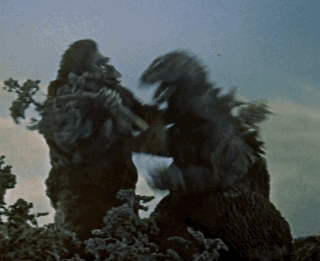
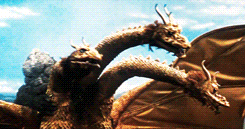
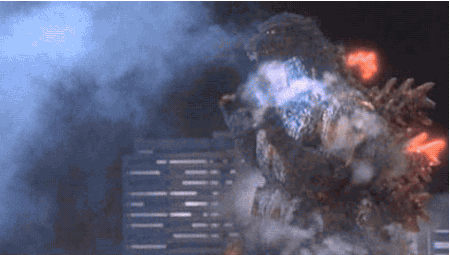

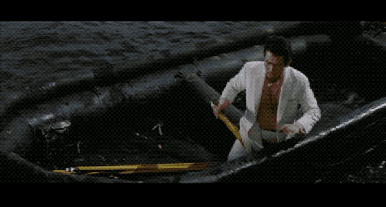
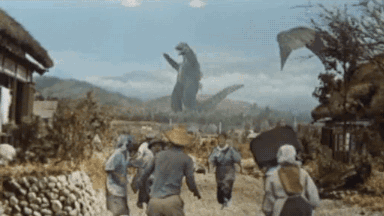

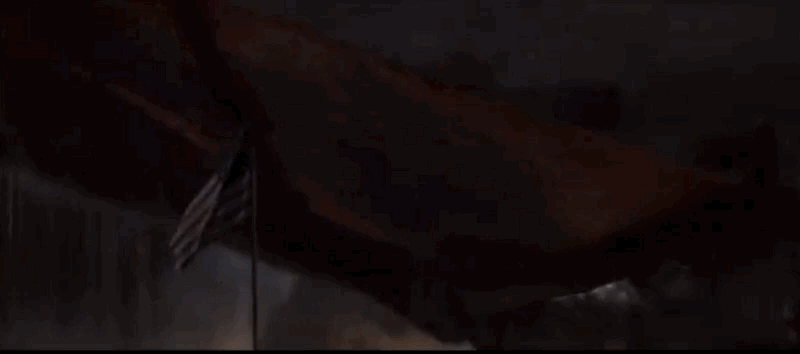
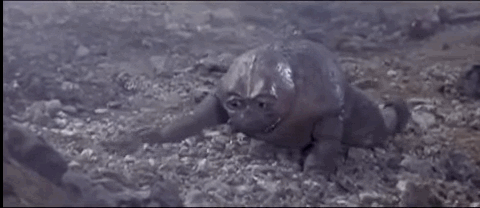
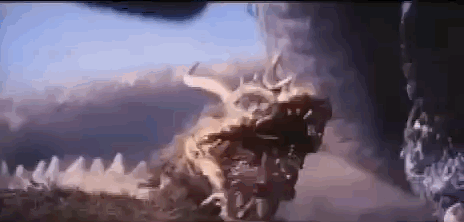


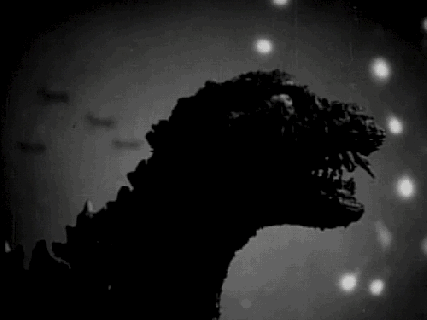

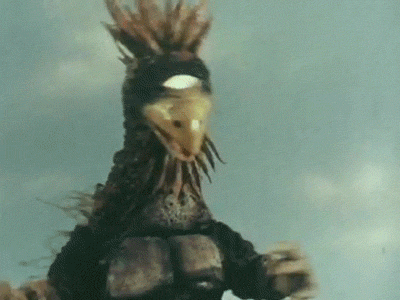
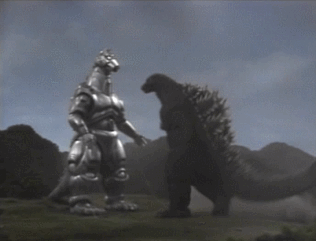
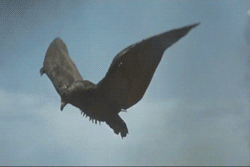

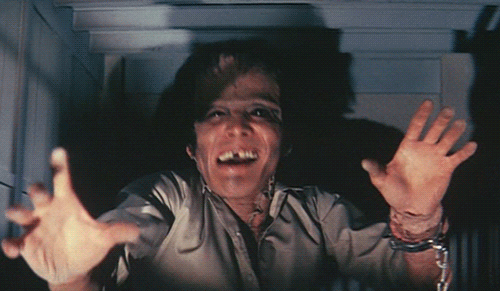

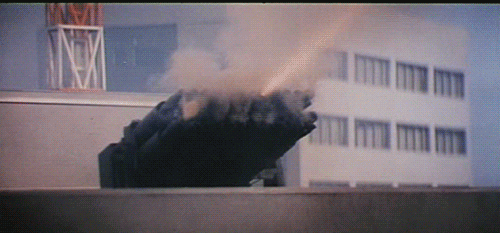


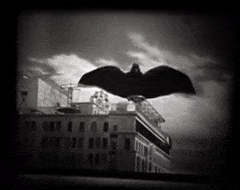
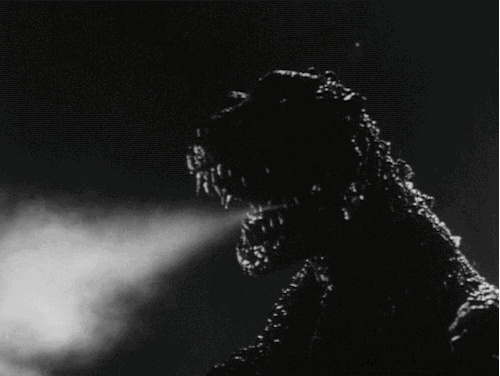
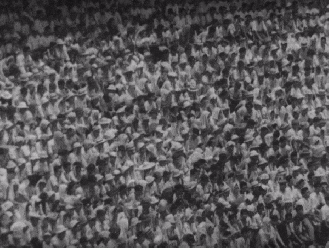
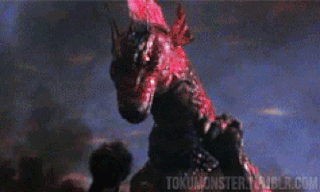
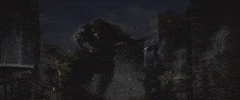

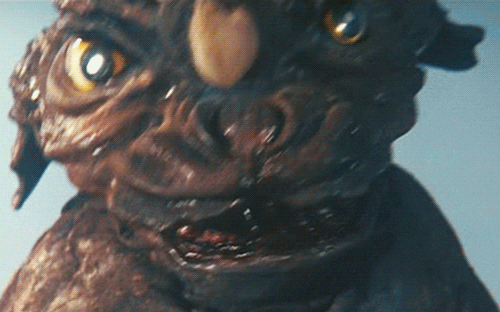

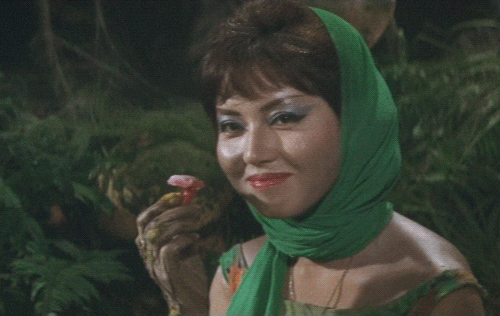
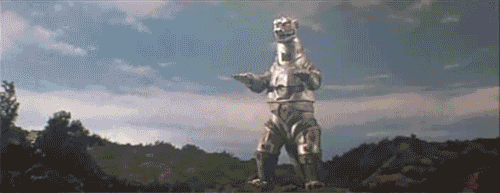
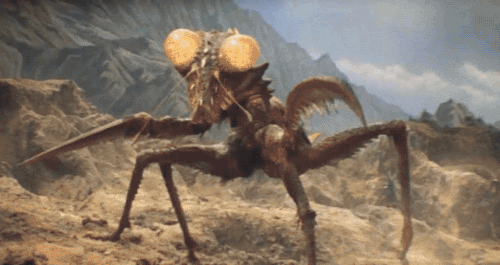
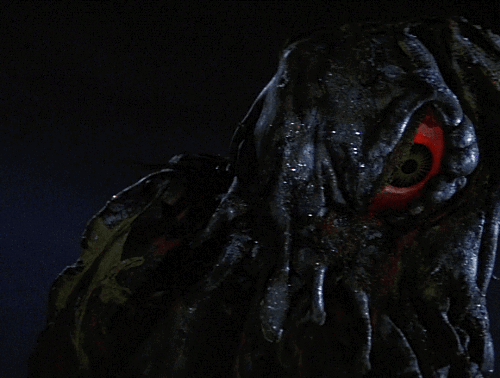
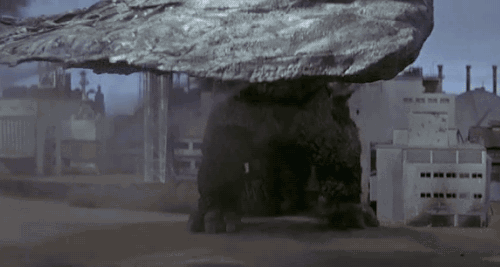
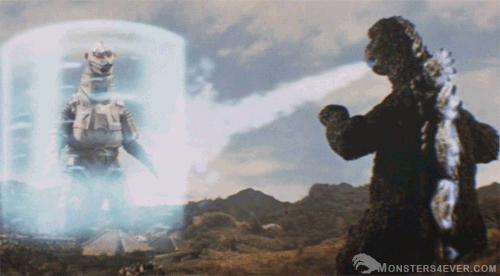
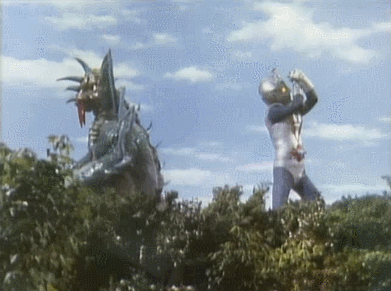

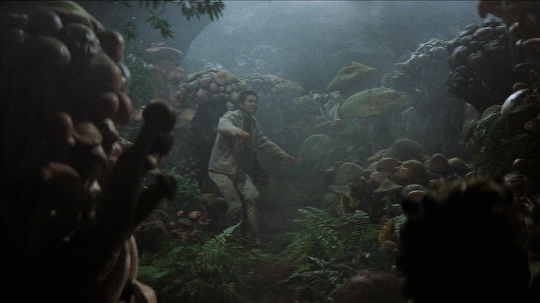
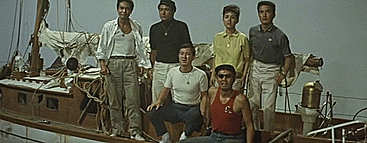
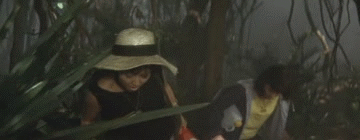

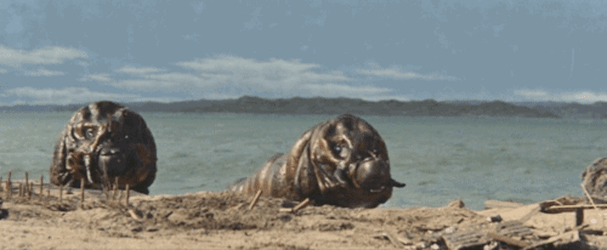
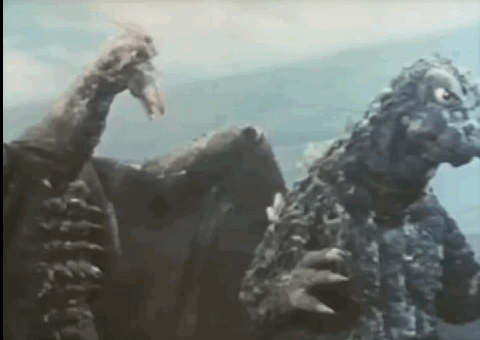

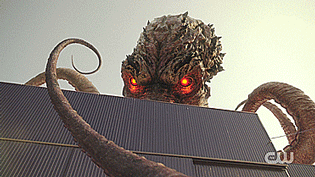
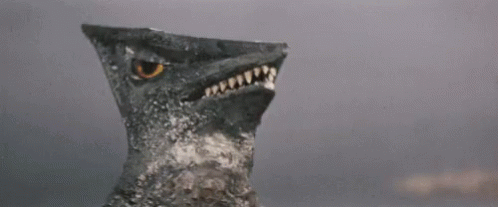
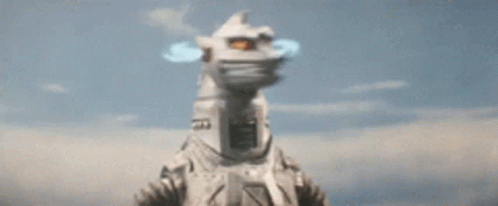
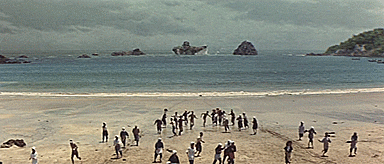
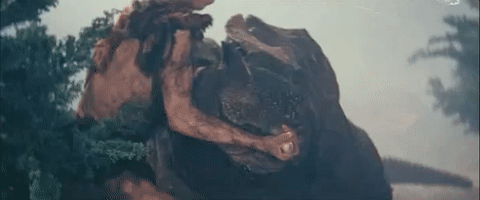

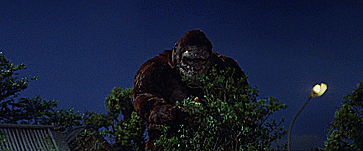
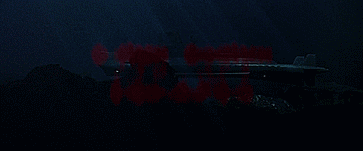
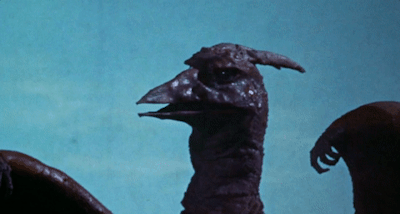
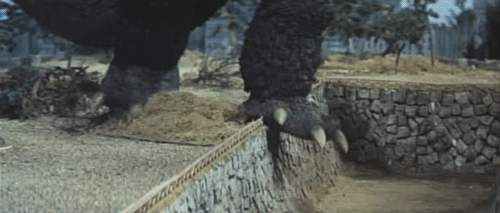
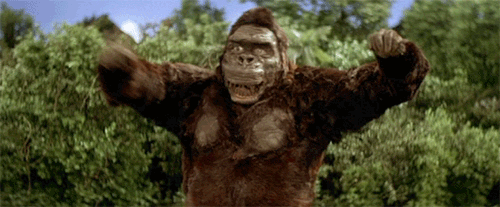
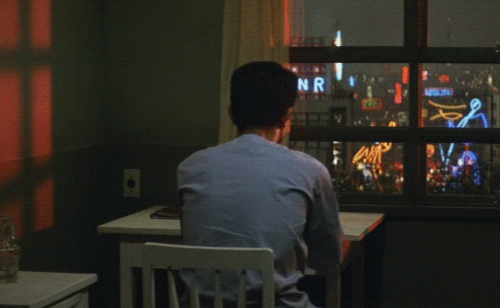
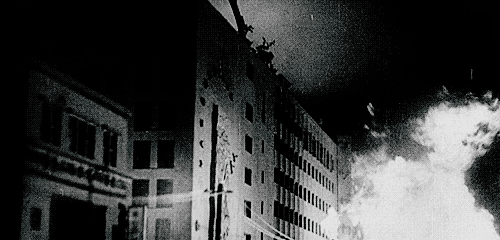
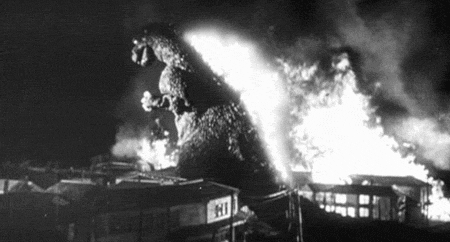

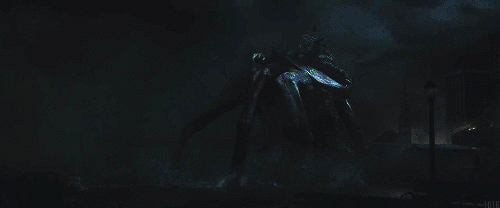

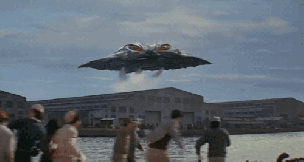

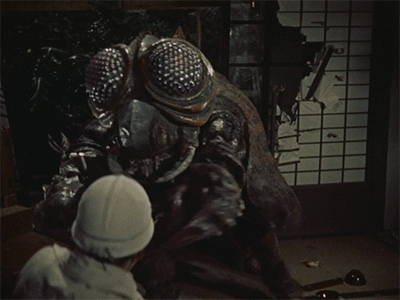
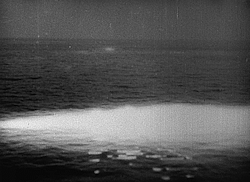
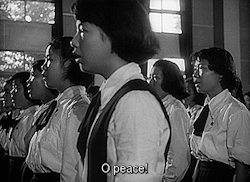
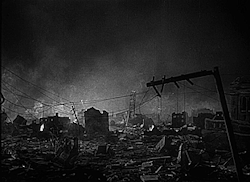
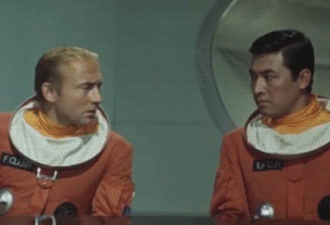
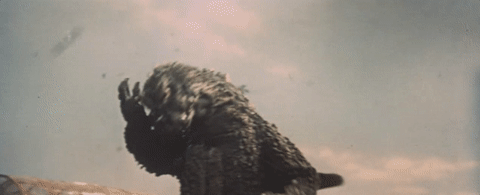
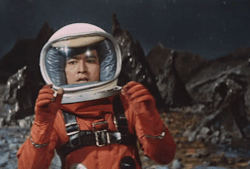
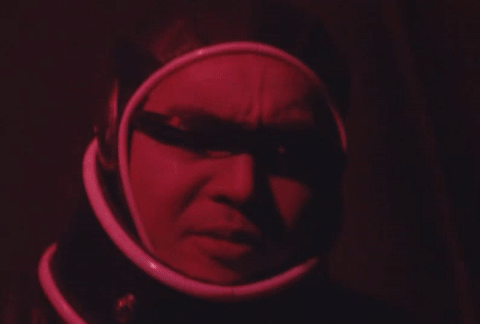
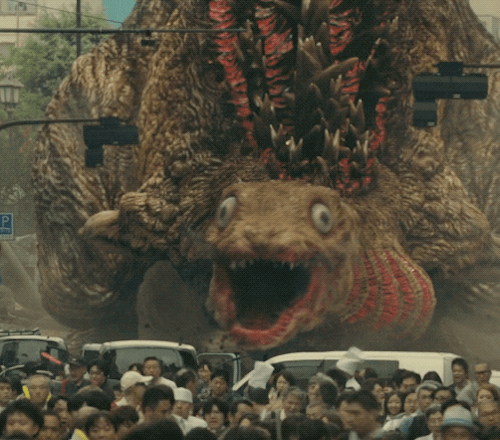
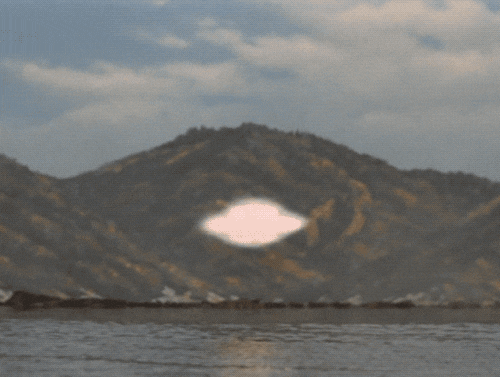
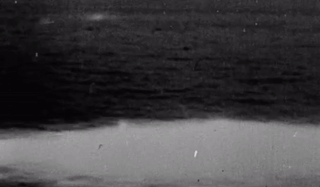
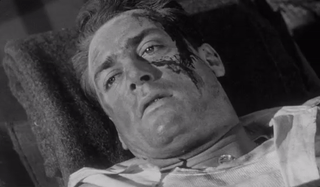
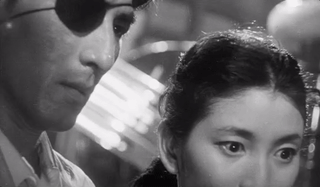
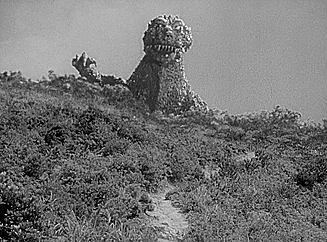
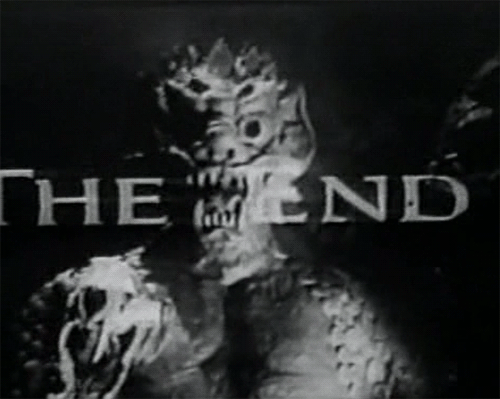

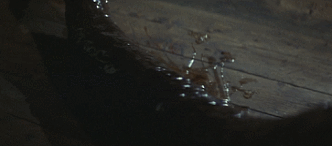
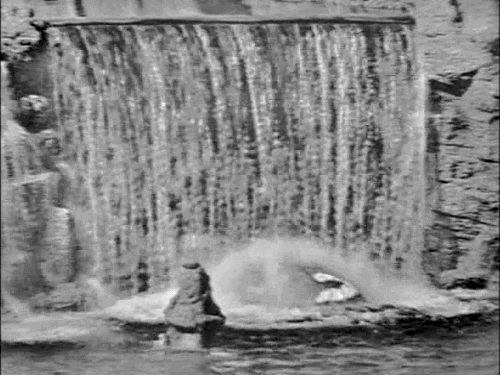
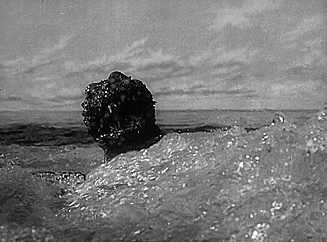

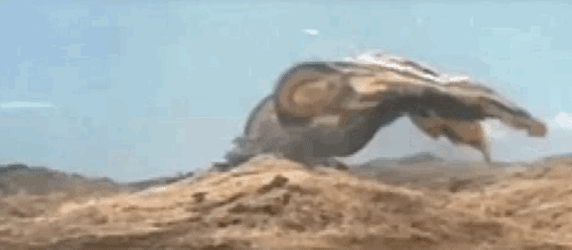
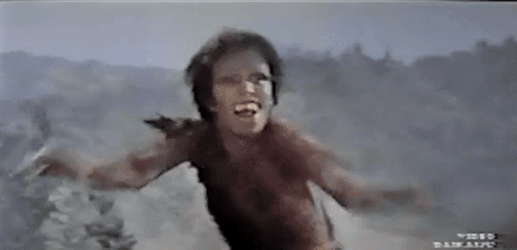
___
Further
Ishirô Honda @ IMDB
Godzilla’s Conscience: The Monstrous Humanism of Ishiro Honda
Ishiro Honda: The master behind Godzilla
Readings: Ishiro Honda: A Life in Film, from Godzilla to Kurosawa
‘Godzilla’ Director Honda Ishiro Describes Seeing Hiroshima Firsthand
7 REVELATIONS ABOUT THE CO-CREATOR OF GODZILLA
Anti-war message inspired Godzilla director Ishiro Honda
Populism as High Art: Getting to the Heart of Ishiro Honda
ISHIRÔ HONDA @ MUBI
What Lies Beyond Godzilla?
Ishiro Honda — Godzilla, gratefulness, and greatness
Obituary: Ishiro Honda
Unknown Stories of Director Honda
Interviews with Ishiro Honda’s Biographers
Ishiro Honda’s ‘Monstrous’ Career
___
Extra
Lecture: Directing Godzilla: The Life of Filmmaker Ishiro Honda
____
Interview
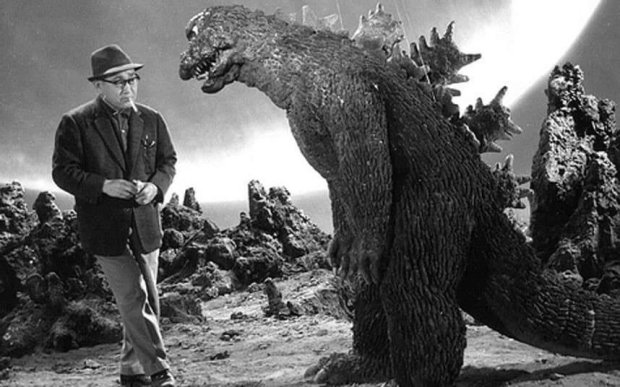
David Milner: I was very sorry to hear about the recent death of Shinichi Sekizawa. What was your professional relationship with him like? (Mr. Sekizawa wrote the screenplays for MOTHRA (1961), GODZILLA VS. MONSTER ZERO (1965), GODZILLA VS. GIGAN (1972), and many of the other science fiction movies that have been produced by the Toho Company Ltd.)
Ishiro Honda: The system that was in place back in the 1950s and 1960s was different from the one that is in place today. During the 1950s and 1960s, the planning department would accept ideas from any of Toho’s employees. THE H-MAN (1958) is a typical example. The idea for that film came from an almost completely unknown actor. MOTHRA is another typical example. The members of the planning department went around gathering ideas from everyone who worked for Toho. Then, four novelists were commissioned to write a story about a big moth and two tiny fairies. Those four people wrote the story, which appeared in the Asahi Shimbun, and shortly afterward Mr. Sekizawa wrote a script that was based on the story. I advised him only on the cinematographic aspects of the story. (The Asahi Shimbun is one of Japan’s most widely read newspapers.)
DM: How would you say Takeshi Kimura’s style was different from Mr. Sekizawa’s? (Mr. Kimura wrote the screenplays for THE MYSTERIANS (1957), GORATH (1962), DESTROY ALL MONSTERS (1968), and a number of Toho’s other science fiction movies.)
IH: Their styles were were very different. If the story were very positive, or even childish, it would go to Mr. Sekizawa. If it were negative, or involved politics, it would go to Mr. Kimura. I really can’t compare the two styles because they’re so different.
DM: GODZILLA – KING OF THE MONSTERS has a semi-documentary feel to it. Was it your intention to have it turn out that way?
IH: The intention of not only the screenwriter, but also the entire production staff, was to focus on how people would react if a creature such as Godzilla really did appear. What would the politicians do? How about the scientists? How would the military handle the situation? Given this, it was inevitable that the film would seem at least somewhat like a documentary. (GODZILLA – KING OF THE MONSTERS was written by Takao Murata and Mr. Honda.)
DM: I have heard that you switched the roles of Akira Takarada and Akihiko Hirata before shooting began on the movie. Is this true? (Mr. Hirata plays Dr. Daisuke Serizawa, the inventor of the oxygen destroyer. Mr. Takarada plays Hideto Ogata, the South Seas Steamship Co. employee who is in love with Emiko Yamane.)
IH: I can hardly remember, but I suspect that it was merely a rumor that Mr. Takarada would be playing the scientist.
DM: There was speculation recently that Ghidrah was meant to symbolize China’s acquisition of nuclear weapons. Is this true?
IH: I doubt it. Ghidrah was merely meant to be a modern interpretation of the eight-headed snake of Japanese myth.
Mr. Sekizawa wrote the screenplay for GHIDRAH – THE THREE-HEADED MONSTER, and he always avoided involving politics in his work.
DM: The entirely animated alternate version of the scene in which Ghidrah first appears in GHIDRAH – THE THREE-HEADED MONSTER is preferred by some to the one that is in the film. Do you know why the one that is in the movie was chosen over the alternate?
IH: I did not choose it, so I can’t answer your question. It was chosen by special effects director Eiji Tsuburaya, whom I trusted so much after we worked on GODZILLA – KING OF THE MONSTERS together that I allowed him to select which special effects footage would be used and which would not. I have never even seen the alternate version. (Mr. Tsuburaya directed the special effects for not only the first seven Godzilla films, but also RODAN (1956), MOTHRA, KING KONG ESCAPES (1967), and many of Toho’s other science fiction movies.)
DM: Why didn’t you direct GODZILLA VS. THE SEA MONSTER (1966) or SON OF GODZILLA (1967)?
IH: There were two reasons. One was scheduling conflicts. The other was Toho’s concern that people would feel monster films had to be directed by me.
DM: Are those the reasons why you also did not direct GODZILLA RAIDS AGAIN (1955)? (It was directed by Motoyoshi Oda.)
IH: Yes. That’s correct.
I frankly was having a hard time humanizing Godzilla the way Toho wanted anyway. I was even hesitant to let Mothra act as a mediator between Godzilla and Rodan in GHIDRAH – THE THREE-HEADED MONSTER. It certainly would have been difficult for me to direct SON OF GODZILLA. (It was directed by Jun Fukuda, who also directed GODZILLA VS. THE SEA MONSTER, GODZILLA VS. GIGAN, GODZILLA VS. MEGALON (1973), and GODZILLA VS. MECHAGODZILLA (1974).)
DM: An original idea for DESTROY ALL MONSTERS that did not make it to the final version of the movie was that the monsters were supposed to not only be studied on Ogasawara Island, but also bred and cross-bred there. What other ideas for the film were rejected?
IH: The original idea was to show all of the monsters. We then started thinking about undersea farming. Eventually, we came up with the idea of an island on which all of the monsters had been collected for scientific study. You see, we imagined that undersea farming would be required to feed all of the monsters. I very much wanted to explore that idea, but because of financial constraints, I was not allowed to do so. Only the idea of an island of monsters survived.
DM: Did financial constraints also prompt the inclusion of stock footage in GODZILLA’S REVENGE (1969)?
IH: At that time, the production budgets were getting smaller and smaller, so it’s likely that they did.
DM: Did Mr. Tsuburaya take part in the production of GODZILLA’S REVENGE?
IH: By that time, his assistants, Teisho Arikawa and Teruyoshi Nakano, were sufficiently experienced to be able to handle the special effects on their own. The thinking at Toho was, “Let them do the actual work.” However, Mr. Tsuburaya was given credit out of respect. (His health was failing at the time. He died at the beginning of 1970. Mr. Nakano directed the special effects for GODZILLA VS. THE SMOG MONSTER (1971), TERROR OF MECHAGODZILLA, GODZILLA 1985 (1984), and a number of Toho’s other science fiction movies. Mr. Arikawa directed the special effects for SON OF GODZILLA, DESTROY ALL MONSTERS, and YOG – MONSTER FROM SPACE (1970).)
DM: I’d heard that you directed the special effects footage for that film. Is this not true?
IH: I directed almost all of it. The two reasons why I did were the limited size of the production budget and time constraints. In addition, the movie was shot in a very small studio, so it was decided not to separate the filming of the special effects and the standard footage as was usually done.
DM: How was that different from working with regular actors?
IH: It was very different. As you know, Godzilla really is a costume that is about 1.8 meters tall. If he were to be filmed as a regular actor would be, he would just appear to be a man in a costume. So, you have to use different camera angles and positions, and you also have to move the camera differently.
DM: What do you think of the most recent Godzilla movies? (They include GODZILLA VS. BIOLLANTE (1989), GODZILLA VS. GHIDRAH (1991), and GODZILLA VS. MOTHRA (1992).)
IH: That’s a very difficult question to answer. I don’t really have a positive or negative opinion about them. The special effects technically are very sophisticated, but the films lack imagination. It seems as if all Toho is trying to do is show things being destroyed. I don’t fault the members of the production department, though, because I know that that is what Toho’s executives are demanding.
DM: Do you feel that the offense some Americans felt when they saw the sequence in GODZILLA VS. GHIDRAH which shows the Godzillasaurus attacking a number of American soldiers was justified? (In GODZILLA VS. GHIDRAH, Godzilla is seen both as Godzilla and as the tyrannosaurus rex-like dinosaur he was before he was mutated by radiation.)
IH: Kazuki Omori went a little too far. He doesn’t blame the soldiers, but I feel that he goes too far. (Mr. Omori wrote and directed GODZILLA VS. BIOLLANTE and GODZILLA VS. GHIDRAH, and wrote but did not direct GODZILLA VS. MOTHRA.)
DM: I have heard that VARAN – THE UNBELIEVABLE (1958) was produced at the request of an American television studio. Is this true?
IH: I can’t remember which studio requested it, but yes, it was requested by an American television studio.
DM: Who made the decision to shoot the movie in black and white?
IH: Toho decided to shoot the film in black and white because all television shows were in that format at the time.
By the way, after we had shot five or six scenes in the standard 35mm format required for television, Toho decided to show the movie in theaters as well as on television. We at first planned to simply re-shoot the scenes in the wider cinemascope format used in theaters, but we were in a rush. So, we just cropped the existing film to fit the cinemascope format.
DM: Which of the films that you directed are your favorites?
IH: I should ask you that question!
I have to say GODZILLA – KING OF THE MONSTERS, but the continuity of the scenes in the movie seems a little amateurish to me these days. Another of my favorites is THE MYSTERIANS. I remember it as being an attempt to portray a very new, and surprising, world. GORATH (1962), too, comes to mind.
DM: Are you unhappy with the way any of the films you directed turned out?
IH: The people who worked in the production department would decide which director to assign to a movie, and their decisions usually were good ones. This was true of their decisions regarding actors and cameramen as well. So, I really haven’t any that I do not enjoy.
DM: Do you feel that you were fortunate to have Akira Ifukube scoring your films? (Mr. Ifukube, one of Japan’s most respected classical composers, scored GODZILLA – KING OF THE MONSTERS, DESTROY ALL MONSTERS, TERROR OF MECHAGODZILLA, and so on.)
IH: Yes. I feel that I was very fortunate in that regard. Mr. Ifukube always seemed to have a profound understanding for the movie on which he was working.
DM: Is it true that he created the roar of Godzilla that was used in GODZILLA – KING OF THE MONSTERS?
IH: Yes. He did. He had a very hard time selecting a sound for Godzilla’s roar. He even grieved over it! Seeing him in that state showed me that he was very seriously thinking about the film, and that made me think that it just might be a successful one.
DM: I have heard that you worked as a still photographer before going into films. Is this true?
IH: No. I was a documentary director for a while, but I never was a still photographer.
DM: With which actors did you especially enjoy working?
IH: The best actress was Kumi Mizuno. She always seemed genuine. Whenever she worked on a movie, she would just step right into her role. All of the other better actors were like that as well. (Ms. Mizuno is best known as Miss Namikawa, the woman from Planet X in GODZILLA VS. MONSTER ZERO, and Dayo, the native girl from Infant Island in GODZILLA VS. THE SEA MONSTER.)
I recently saw GODZILLA VS. MOTHRA, and I noticed that the younger actors in the film were not thoroughly involved in it.
DM: Would you say that the actors with whom you worked during the 1950s and 1960s were generally better than those who have appeared in Toho’s more recent science fiction movies?
IH: Yes.
DM: Can you think of a reason why that might be?
IH: Times are just different.
DM: How did you like working with Nick Adams? (Mr. Adams plays Glenn, the American astronaut, in GODZILLA VS. MONSTER ZERO, and Dr. James Bowen, the radiation specialist, in FRANKENSTEIN CONQUERS THE WORLD (1965).)
IH: He was a very passionate actor who had some very good ideas. There should have been two or three more films produced with Mr. Adams whether they were monster movies or not.
DM: I have heard that very little improvisation was allowed during production for financial reasons. Is this true?
IH: Yes, that is true, but sometimes an actor would find it difficult to say a certain line. Whenever that happened, I would change or delete the line.
DM: Did that happen very often?
IH: It happened during the production of virtually every film that I directed.
DM: Did you work on any movies that did not end up being produced?
IH: There were a few, but they weren’t science fiction films.
One that was being planned was THE FISHERMEN. It was going to be a semi-documentary about fishermen living in Okinawa. I wrote a synopsis, but Toho canceled the project. The story, which mainly was about the younger generation wanting to leave Okinawa for the big city, eventually got out, and was produced as a documentary by another studio.
Another canceled project was a Japanese version of THOSE MAGNIFICENT MEN IN THEIR FLYING MACHINES. Mr. Tsuburaya also had planned to work on such a movie. I interviewed many of the pioneers of Japanese aviation, and a script was completed. I’m not sure if the project was canceled for financial reasons, or if it was canceled simply because Toho decided against producing the film.
A third movie I originally was going to work on was a Japanese version of GHOST. A dead soldier comes back to Japan from a foreign war. He wanders around…
This is highly classified information!
DM: Do you feel that there should not have been any sequels to GODZILLA – KING OF THE MONSTERS produced?
IH: Godzilla was a product of the times. There previously had been no monster like him. So, people were frightened, and shocked, by him. Now, when Godzilla appears in a city, most of the buildings are even taller than he is!
The image of what a monster is shouldn’t stay the same. It should be different so that people will be shocked and surprised, just as they were by GODZILLA – KING OF THE MONSTERS in 1954. Something new, and strange, must be created.
DM: Were you surprised by the international success of your films?
IH: I am always amazed by the enthusiasm of the fans in the United States!
DM: Godzilla was created in reaction to the development of nuclear weapons. Since nuclear war is no longer as great a threat as it once was, many fans feel that Godzilla should now instead be used to address environmental concerns. Do you agree with this?
IH: Yes. I agree.
DM: TriStar Pictures is planning to produce a Godzilla movie in the United States next year. How do you feel about this?
IH: The film will probably be much more interesting than the Godzilla movies that are being produced in Japan. I’m glad.
____________
23 of Ishiro Honda’s 77 films
________
Godzilla (1954)
‘Director Ishiro Honda gathered his crew and gave them an ultimatum. He was about to put his career at risk, and he would only work with those who approached his current project—a movie about a radiation-spewing prehistoric reptile that destroys Tokyo—with the utmost seriousness, as he himself did. “He told them . . . ‘Read the script. If you are not convinced, please let me know immediately and leave the project,’” Kimi Honda, the director’s wife, recalled years later. “He only wanted those who had the absolute confidence to work with him on this film.”
‘It was the spring of 1954, and Honda was readying to direct Godzilla. As the first movie of its kind produced in Japan—and one of the most expensive movies made in the country to date—it was an audacious project for the filmmaker, for Toho Studios, and for a domestic film industry that had been left devastated and demoralized after World War II but was now resurgent. During the fifties and sixties, the masters of postwar Japanese film (Akira Kurosawa, Kenji Mizoguchi, Masaki Kobayashi, Mikio Naruse, Nagisa Oshima, Kon Ichikawa, and many others) would produce a bumper crop of exemplary, enduring cinema, acclaimed at home and abroad. Concurrently, a generation of studio-contracted directors would crank out commercial program pictures for the domestic market—dramas, comedies, period pictures, gangster pictures, and musicals—with efficiency and hit-making skill. Honda was among the latter group, but he would forge a unique path as Japan’s foremost director of kaiju eiga, or giant-monster movies. While the works of Kurosawa et al. were limited to art-house distribution abroad, Honda’s films played to mainstream moviegoing audiences in the U.S. and across the West, and they have subsequently become ensconced in the pop-culture pantheon. Honda’s influence is undeniable: as one of the creators of the modern disaster film, he helped set the template for countless blockbusters to follow, and a wide array of filmmakers—including John Carpenter, Martin Scorsese, Tim Burton, and Guillermo del Toro—have expressed their admiration for his work. Yet the full scale of his achievements has only recently begun to be appreciated.’ — The Criterion Collection
Excerpt
Excerpt
____________
Godzilla Raids Again (1955)
‘Toho Studios followed the enormous success of the original Godzilla with this sequel as a straight-ahead monsters-on-the-loose drama. An underrated standout among the Showa Godzilla films, Godzilla Raids Again introduces the monster-versus-monster format that would dominate the remainder of the series, pitting Godzilla against the ferocious, spiny Anguirus as the kaiju wreak havoc in the streets of Osaka in a series of elaborate set pieces that succeed in upping the ante for destruction.’ — The Criterion Collection
Trailer
Excerpt
____________
Half Human (1955)
‘HALF HUMAN had something of an infamous reputation that sort of made it something of a legend in circles regarding Toho’s tokusatsu films. Toho Company pulled it from circulation sometime in the 80s I believe so the only way you can actually watch it is bootleg copies or somewhere online. The reason for this self imposed ban has been allegedly due to its depiction of native tribes in a less then savory manner.
‘Does the film live up to its controversy and decades long “legendary” status? Well, yes and mostly no. The controversial aspects surrounding the natives are pretty much true to what you’ve heard. Every native except the main native woman are shown to be dirty, seemingly deformed and all around just really badly mannered people who probably fit most checklists for old stereotypes of native people. So with regards to its controversy it certainly is obvious to see why it has such a notorious reputation, with regards to the rest of the movie it sort of just falls into a rather “meh” category.’ — Dr_Mafoony
Trailer
______________
w/ Terry O. Morse Godzilla: King of the Monsters! (1956)
‘yeah let’s just take a cathartic work of national grief and guilt and re-edit/dub it so none of that pain or soul registers, remove any and all mention of nuclear fallout and instead include an american protagonist bumbling around because i guess treating the japanese characters as people we should care about is asking too much. americans are so dumb. few know this.’ — josh lewis
Trailer
____________
Rodan (1956)
‘In the Japanese mining village of Kitamatsu, miners ares starting to disappear deep inside shaft number 8. Some of the men sent to investigate are killed but one who has managed to escape brings back a tale of a giant insect. Soon, the giant prehistoric insects are attacking the village. Not long after, something traveling faster than the speed of sound is found flying in the sky. It is Rodan, a giant flying prehistoric reptile that has come to life. It spreads terror throughout Japan and is seemingly invincible to any weapon they may throw at it.’ — garykmcd
Trailer
Excerpt
_____________
The Mysterians (1957)
‘The Mysterians come from an exploded planet and aren’t the friendliest aliens: they start forest fires and landslides, and send up a galumphing robot monster. They ask for three kilometres of Japan, but really want the whole earth; most ghastly of all, they kidnap women to propagate their kind. Still, we humans aren’t very nice in return, and it’s not long before this lively sci-fi extravaganza from Inoshiro Godzilla Honda has turned into an out-and-out war film, with tanks and ray guns trundling and blasting away in the midst of lavish but variable special effects.’ — Time Out
the entirety
_____________
Varan The Unbelievable (1962)
‘When a rare species of butterfly is found in a mysterious valley in Japan, a pair of entomologists go to investigate and find more. However, when they get there they find an uncharted lake and as they are observing it they are caught in a landslide and killed. A reporter named Yuriko, the sister of one of the men decides to go to the area to find out what exactly happened. She is accompanied by another entomologist named Kenji and a reporter named Horiguchi. When they get to the village where the men were last seen alive they find out about a legend regarding a giant monster. They soon find out that it is not a legend and the monster named Varan is very much alive. Soon Varan leaves the valley where he has lived for millions of years and is heading for Tokyo.’ — letterboxd
the entirety
______________
Battle in Outer Space (1959)
‘Ishirō Honda steps his game up considerably for this loose sequel to The Mysterians. While not a kaiju film outright, its connection to the lore earned itself a spot on my rankings. Battle in Outer Space takes the globalist themes explored in The Mysterians to new heights, with all the nations of the world banding together to send our own brave astronauts into space to deal with an alien menace. It has some of the most intricate miniature work we’ve seen yet from Toho, and comes off far more convincing and exciting than other space exploration films releasing at the time. Perhaps a pulpy B-movie is all this really is, but the timeless message of unity rings true even to this day. Ishirō Honda, like fellow dreamer Gene Roddenberry, clearly had high hopes for where the planet was headed. Let us not disappoint them.’ — Minion Max
Trailer
__________
Mothra (1961)
‘One of the most iconic Japanese kaiju, Mothra has appeared in over a dozen feature films. Presented here is her debut, a gloriously vibrant piece of filmmaking that forever changed how kaiju eiga would be produced in Japan. Following reports of human life on Infant Island, the supposedly deserted site of atomic bomb tests, an international expedition to the heavily-radiated island discovers a native tribe and tiny twin female fairies called “Shobijin” who guard a sacred egg. The overzealous expedition leader kidnaps the Shobijin to exhibit in a Tokyo stage show but soon they summon their protector, hatching the egg and releasing a giant caterpillar. When Mothra arrives in Japan and transforms into her final form, the nation and its people face their destruction. Psychedelically colourful, with an intelligent, benevolent protector as its lead kaiju, Mothra was radically different to every other monster movie that had come before it, and it remains a classic of the genre to this day.’ — AMP
Trailer
_____________
King Kong vs. Godzilla (1962)
‘Honda’s first outing with Kong isn’t a solo feature. Instead, it’s King Kong vs. Godzilla (1962), a film that’s exactly what it says on the tin and so much more. King Kong vs. Godzilla focuses on the exploits of Osamu Sakurai (Tadao Takashima), a naïve worker for the shady Pacific Pharmaceuticals. The company has been struggling as of late, so in a bizarre, last-ditch attempt at boosting interest in their product, they’ve decided to send Osamu and his friend Kinsaburo Furue (Yû Fujiki) to the mysterious Faro Island in hopes of bringing back a massive monster. Why? To boost sales of Pacific Pharmaceuticals’ drugs, of course!
‘There’s an undeniable heavy satirical bent to the proceedings, with Pacific Pharmaceuticals acting increasingly evil as the film goes on. While Osamu and Kinsaburo are sympathetic, the same cannot be said of Mr. Tako (Ichirō Arishima), their boss and the film’s de-facto evil businessman. How evil is he? Well, when Godzilla unfreezes from an iceberg and begins campaigning right for Japan, Mr. Tako bemoans how this will take publicity away from Pacific Pharmaceuticals. Oh, and he parades around the second act of the film wearing a tan suit with a red armband. A saint he is not.’ — Daily Dead
Trailer
_____________
Matango (1963)
‘Five vacationers and two crewmen become stranded on a tropical island near the equator. The island has little edible food for them to use as they try to live in a fungus covered hulk while repairing Kessei’s yacht. Eventually they struggle over the food rations which were left behind by the former crew. Soon they discover something unfriendly there…’ — letterboxd
the entirety
______________
Mothra vs. Godzilla (1964)
‘Godzilla faces off against the benevolent insect monster-god Mothra in this clash of the titans, a crossover battle between two of Toho Studios’ most popular monsters—the last in which Godzilla would figure as a malevolent villain rather than a fearsome hero. Mothra vs. Godzilla marks a creative high point in the Godzilla series, with pointed social commentary from director Ishiro Honda, a masterful score by Akira Ifukube, and astonishing special-effects work by Eiji Tsuburaya.’ — The Criterion Collection
Excerpt
Excerpt
___________
Dogora (1964)
‘Another great sci-fi tokusatsu from Ishirō Honda and the gang. Usually, I’d say that Eiji Tsuburaya’s effects are the star of the show in these things. Dogora, however, has some pretty interesting characters, particularly Mark Jackson and Inspector Komai, who feel like they fell out of a 60s era James Bond film. I would love to see more films with these characters. The whole diamond heist subplot was almost as engaging as the giant space jellyfish stuff. Oh, and that space jellyfish looks great by the way. There’s some scenes that look straight Lovecraftian, with tentacles reaching down from an otherworldly sky. Great stuff.’ — Tears-in-Rain
Trailer
_____________
Ghidorah, the Three-Headed Monster (1964)
‘After laying waste to an alien civilization on Venus, the three-headed, lightning-emitting space monster Ghidorah brings its insatiable thirst for destruction to Earth, where fierce foes Godzilla, Rodan, and Mothra must join forces in order to deal with the unprecedented threat. An electrifying screen debut for Godzilla’s archenemy Ghidorah, this film also marks a turning point for the series, as the first time the King of the Monsters acts to protect the planet.’ — TCC
Trailer
_____________
Frankenstein Conquers the World (1966)
‘A brilliant concept (the nazis confiscate Frankenstein’s heart and give it to the Japanese right before the bombing of Hiroshima) is given mundane treatment (this seems long at 90 mins) and the Frankenstein monster himself never really makes an impression. I saw the ending with the giant squid fight which is so crazy it becomes the best scene by default.’ — MUBI
Trailer
Excerpt
____________
Invasion of Astro-Monster (1965)
‘Aliens from Planet X make an irresistible offer to the people of Earth: let them borrow Godzilla and Rodan to help defeat King Ghidorah, and in return they will provide a cure for all known human disease. But the aliens’ duplicity is soon revealed, as they deploy all three monsters in their quest to conquer Earth. This retro romp, featuring American star Nick Adams, stands as a high point in the Showa Godzilla series.’ — The Criterion Collection
Excerpt
Carnage count
_____________
The War of the Gargantuas (1966)
‘Gaira, a humanoid sea beast spawned from the discarded cells of Frankenstein’s monster, attacks the shores of Tokyo. While the Japanese military prepares to take action, Gaira’s Gargantua brother, Sanda, descends from the mountains to defend his kin. A battle between good and evil ensues, leaving brothers divided and a city in ruins.’ — letterboxd
Excerpt
Excerpt
______________
King Kong Escapes (1967)
‘King Kong is brought in by the evil Dr. Who to dig for Element X in a mine when the robot Mechani-Kong is unable to do the task. This leads to the machine and the real Kong engaging in a tremendous battle atop Tokyo Tower.’ — letterboxd
Trailer
_____________
Destroy All Monsters (1968)
‘A romping Japanese monster rally, the 20th production in this vein from Toho studios, who have energetically devastated Japan on film virtually every year since 1954. Their output is graphic and witty, with a weird gladiatorial style which has emerged under the guidance of Honda since his first Godzilla. In some ways these features are more like sporting events than fantasies, with a radio commentary (‘It’s Godzilla leading the attack’) as the monsters of this world rally to protect it from extraterrestrial invasion.’ — Time Out
Trailer
Excerpt
_____________
All Monsters Attack (1969)
‘Director Ishiro Honda returned again for the first Godzilla movie expressly for children. Economizing by reusing effects shots from other films in the series, All Monsters Attack tells the story of Ichiro, a lonely latchkey kid who finds solace in his dreams of befriending Minilla, the titular progeny of Son of Godzilla, whose parent is also often absent. In this thoughtful, human-scale story, boy and monster learn together what it means to grow up.’ — TCC
Trailer
_____________
Space Amoeba (1970)
‘From the empty caverns of space to the darkest depths of the sea, this new species knows only destruction and chaos! Space Amoeba is the last non-Godzilla film to be directed by Ishiro Honda and scored by Akira Ifukube. Shot on location in Guam, the film uses many of the actors featured in Destroy All Monsters. Alien space creatures hitch a ride on an unmanned space probe and head for Earth. Crash landing on an inhabited island, the parasitic forms take over and enlarge three local creatures, a squid (Gezora), a crab (Ganimes) and a snapping turtle (Kamoebas, who made a brief appearance in Godzilla”: Tokyo SOS). The parasitic chain-reaction has been set in motion…beware!’ — Cayman
Trailer
_____________
Terror of Mechagodzilla (1975)
‘In Godzilla’s last gasp of the Showa era, aliens retrieve Mechagodzilla’s remains and rebuild it with the aid of an unhinged biologist (a scenery-chewing Akihiko Hirata), in hopes of defeating Godzilla for possession of planet Earth. This film marked the return of director Ishiro Honda, who had retired years earlier, disheartened by the increasingly kid-friendly approach of the series. For this final entry, Honda steers the King of the Monsters back into grim territory, interweaving an alien-invasion plot with a tale of tragic romance.’ — The Criterion Collection
Excerpt
Excerpt
_____________
w/ Takao Okawara Godzilla vs Destoroyah (1995)
‘Godzilla, its body burning, lays siege to Hong Kong. It’s discovered that the King of the Monsters is on the verge of a meltdown. If Godzilla reaches a critical temperature, the resulting detonation will breach straight to the Earth’s core and have a cataclysmic result. Meanwhile, a mysterious race of crustacean-like beings are spotted across Japan. Recent studies have been done on a process called Micro Oxygen, a method of increasing the size of something as a possible solution to help with food shortages. However, this new creature seems to have a more ancient history, being born from the Oxygen Destroyer itself that killed the original Godzilla in 1954.’ — Soho Kingdom
Trailer
Behind the scenes
*
p.s. Hey. ** David Ehrenstein, Indeed. I actually love those paranormal investigation shows, but it’s a guilty pleasure to be sure. No, it’s not the Far Right here having problems with the COVID restrictions per se, it’s the owners and denizens of nightlife businesses mostly and understandably. Another big difference here is that people are griping, but they’ll do what they’re asked to do. Everyone, One more add to Mr. Ehrenstein; home sale, namely … ‘I have a framed “Last Temptation of Christ” poster signed by Marty going fo $175.00’. Hit him up. ** Misanthrope, Yum. I’m going to Halloween at Parc Asterix today, but I’m pretty positive their haunted houses won’t be as scary as Trail of Terror. A lot more quaint though, I bet. Well, ultimately, it’s good you’re not the Hulk. Keep feeling better and have a swell weekend. ** Ian, Hi, Ian. Cool. Oh, yeah, same era and countercultural leanings: ‘Breckenridge’ and ‘Candy’. Glad you had fun with it. I’ll max out my weekend, thanks, and you rob your weekend’s pleasure center blind. ** Bill, The zombie thing is so, so tired and maxxed out, but it does seem to be a big sell thematic. ** _Black_Acrylic, Hi, Mr. R. I know the name Wigan, I think from comedy things where it’s used as a kind of a punch line of sorts, so all I know about it is that the name alone can be humorous. ** Gus, Hi, Gus! I have your album cued up for tomorrow — I’m doing an amusement park all day today — and am readying my ears. Yeah, the event was so trippy, really very LSD or something. John (Waters) has this weird ability to be practically everywhere. Guy’s like a pinball, very happily. Oh, cool, thanks for the fill-in about your writing. Of course I’m intrigued about this novel you’re working on. Your little description sounds super promising. If you need an invisible cheerleader, I’m game. I’ve only been to Australia once, basically just in Melbourne and Tasmania. Australian summers are really scary to even hear about, being a heat hater. The curfew is doable, I think. The question is if it’s enough, I guess. The French efforts are definitely a million times more coordinated and thought-out than the US mess, and I’m very glad I’m riding this thing out here. When I talk/Zoom with my US friends, everyone still seems very scared and shellshocked, and here the vibe is pretty laissez faire about the virus itself with this faith that following the rules is sufficiently protective. Which could be foolish I guess, but the chill atmosphere is much appreciated. I send you my best in return. I hope your weekend is packed with all kinds of inspiring whatevers. ** Steve Erickson, Oh, it’s a Sorkin thing. Okay, that helps me know what to expect. I hope you and the glasses become bffs ASAP. ** Brian O’Connell, Howdy, Brian. Word is that the Prague one is as advertised. I know someone who did it last year and took the highest intensity option and broke a rib. Although it just got shut down yesterday as Prague is the worst COVID hit city in Europe now. Yeah, it’s weird about the ever exuding of interesting stuff. Every once in a while I think, Okay, I’m out of gas and things to make posts about, but something always comes along to trigger another flood. Happy late birthday to your brother, or early ‘happy’, I guess, if the weekend is the place it’ll happen. Ah, that melancholy folly thing … I know it well. I will say I used to wring a lot of poems out of that rich state of heart and mind, and some of them weren’t too bad. So there’s your bright side, ha ha. In any case, enjoy the re-sighting and the general fun. Thanks, yeah, I’m off to Parc Asterix in 20 minutes, and I intend to come home pleasurably beat. ** Josh D, Hey Josh! Good to see you! I got your email/book, yes. I haven’t started reading it yet, but I’m sure looking forward to the dive. Happy Halloween to you just in case too! ** Okay. This weekend’s Halloween-attached post is a swarm of Japanese monster movies courtesy of the great Ishirô Honda, Have fun. See you on Monday.




 Now available in North America
Now available in North America 
Hi Dennis, yes things have been going well. Haha I’ve been trying to make a conscious decision to prioritise my own projects instead of the job so much, so we’ll see what comes of it. How are you?
Hi. Heres a very eloquent write up of Thomas Moore’s Alone https://www.adamlehrer.com/blog/2020/10/15/in-thomas-moores-novel-alone-happiness-is-a-temporary-kink
HONDA = Cinema
BTW, Honda served as Kurosawa’s a.d. on “Ran” as a sgn of respect for the master.
In Lockdown, I watched “Destroy All Monsters.” A masterpiece! Probably the biggest news for me is some trees were cut down in my neighborhood, and I now can see the Observatory from my living room window. Without a doubt, the Observatory is a weird version of The Eiffel Tower or Mount Fuji for us Los Angeles citizens. I feel good that it looks over the Los Angeles landscape. I voted a few days ago, and it feels good to be a citizen, and also hoping that the results will get rid of the nightmare that doesn’t shut up. Due to “Destroy All Monsters” I want to see the other Honda films. I have seen them before, but as a child, and usually on TV at a silly hour of the morning. It must have been great to see them on a big screen.
Ah, now this is my kind of day! Love those old Japanese monster movies… when I was a kid I was utterly obsessed with everything Godzilla-related and one of my most enduring childhood memories was watching such films on Saturday afternoons. Starting in the mid-1980’s one of the local TV stations would often play such films on Saturday afternoons, and these creature features were usually bookended by humorous skits that were hosted by a horror host named Morgus the Magnificent; I believe the official title for these skits was Morgus Presents. Morgus himself was played by a New Orleans actor named Sidney Noel Rideau, and he looked like an eccentric mad scientist with a crazy hairdo, black eye shadow, and a filthy-looking lab coat. It’s been years since I’ve seen any of those skits but I recall that he was a remarkably unattractive man, something my mother was always commenting on. In true mad scientist fashion he had his very own dimwitted assistant, a tall and lumbering mute named Chopsley, whose face was hidden from sight by a brown executioner’s hood. There was also a talking human skull attached to an Apple computer. Eric, that was the skull’s name. The way it would work is that the first skit would involve Morgus and Chopsley preparing some well-intentioned but utterly ludicrous science experiment. Then that day’s film would start, and at the end of the film, there would be a second Morgus skit showing how the experiment ended up: almost always disastrously. I remember that one of these experiments had Chopsley removing Morgus’ head and attaching it to some kind of super computer. While I found these skits enjoyable, my main interest in these programs was still the actual monster movies themselves. Although truth be told I usually found the first halves of said films a little tedious: all I really wanted to see were the monsters destroying shit, plot be damned, ha ha.
The first Godzilla film I saw was, appropriately enough, the very first one from 1954, though the version I saw was the 1956 “Americanized” version featuring Raymond Burr. At the end of the movie, Godzilla is defeated by a device known as the “Oxygen Destroyer,” and you see his corpse beneath the ocean, a corpse that is quickly reduced to that of a skeleton. The first time I saw this scene, probably around 1986 or so, I was so saddened by the spectacle of Godzilla’s death that I burst into tears. I recall that the first time I saw Jaws I also started crying at the end of the film, when the titular shark was killed. What can I say? When it came to these monster movies I was pretty much always on the side of the monster.
For family lockdown DVD viewing a Honda season might be pushing it, but these trailers and clips sure are a lot of fun.
My Dundee writing group seems to be dying a natural death just now. I’m determined to get some short story action started of my own accord, though. Just at the reading stage but it’s all percolating through.
Trick or treat Dennis!
I wanted to share a 3-minute dance thing I did in honor of you, Vienne, and O’Malley for Halloween: https://youtu.be/JhgXH-Ltmn4
The music is from the album O’Malley did with Senyawa–I lost my marbles when I found out that O’Malley did a collab with Indonesian musicians since I teach classical Javanese and Balinese dance and always enjoy seeing those cultures represented. The mask is from Java and there’s a little “trick” to Indonesian dance masks that allows the dancer to take them on and off in a way that seems impossible, it’s analog magic.
The dance will feature in our online haunted house on the 29th (folks, Kathe Koja, Maryse Meijer, and Stephen Graham Jones are headlining and it’s 100% free! step right up: https://las.depaul.edu/centers-and-institutes/depaul-humanities-center/events/Pages/winter.aspx ) Since we have about infinity negative zero dollars we have to do a lot of the stuff ourselves with what we have around the house, scrappin’ it up & trying to keep the spirit of Halloween alive during these Covid crazy times.
I hope you’re keeping the Halloween spirit in your heart too these days, Vitamin D!
Slime & snails & puppy dog tail hugs,
— The little Twin that could
Ps–I saw this post and thought “meh, I don’t like Godzilla”–but then I watched some of the clips (since I’ve never actually seen a Godzilla movie…but felt really comfortable passing judgment on them) and dang, what a cutie. The Mothra one especially is hilarious and adorable–protect the egg or eat the egg or–do whatever you need to do with that egg, dude, just don’t fall over!!
Hey, Dennis,
Ishirô Honda! An underappreciated master. I’ve only seen the original “Godzilla”, but that’s strong enough for his entire career to rest on alone. A surprisingly austere and at times genuinely chilling creature feature opus. The ending is so moving. Classic for a reason.
This weekend was nice as anticipated; seeing people was livening, and I did get to luxuriate in my general melodramatic gloominess around my crush, lol. The poetry thing would be very helpful with the situation, except I have no knack for poetry at all. I used to write a lot more—not poetry, mostly clumsy genre fiction that I can hardly bear to reread now, although a few of those pieces did earn me places in various small press anthologies and magazines and so on—but I feel like the skill has almost completely left me, or is limited to subjects I no longer find worthwhile. I guess my place is as a reader in the end. It sounds kind of morose when I put it like this, but I often find other people express my feelings better than I can myself.
And you? How about your weekend? I expect a full report about the Parc, etc. Have a wonderful day.
More than 18 months after I wrote a screenplay with a similar premise, someone sent me an E-mail today claiming to be a hacker who videotaped me masturbating to porn through my web camera and saying that they will share the video with the Internet if I don’t send them $1,000 in Bitcoin in the next 2 days. The BLACK MIRROR episode “Shut Up and Dance” has this same premise, although I hadn’t seen it when I wrote my script. The “blackmailer” probably got the idea there. Who the hell is gonna take this seriously? People whose taste in porn is illegal, like the protagonist of “Shut Up and Dance”?